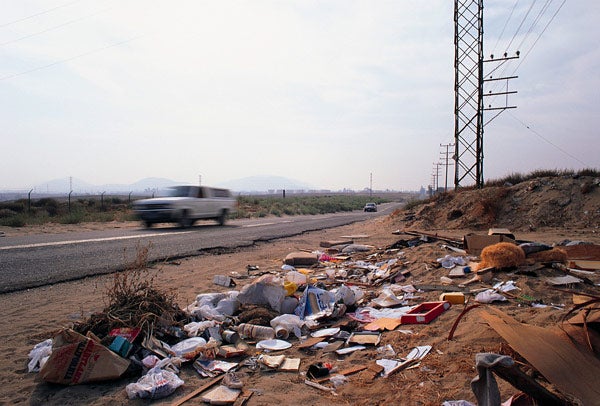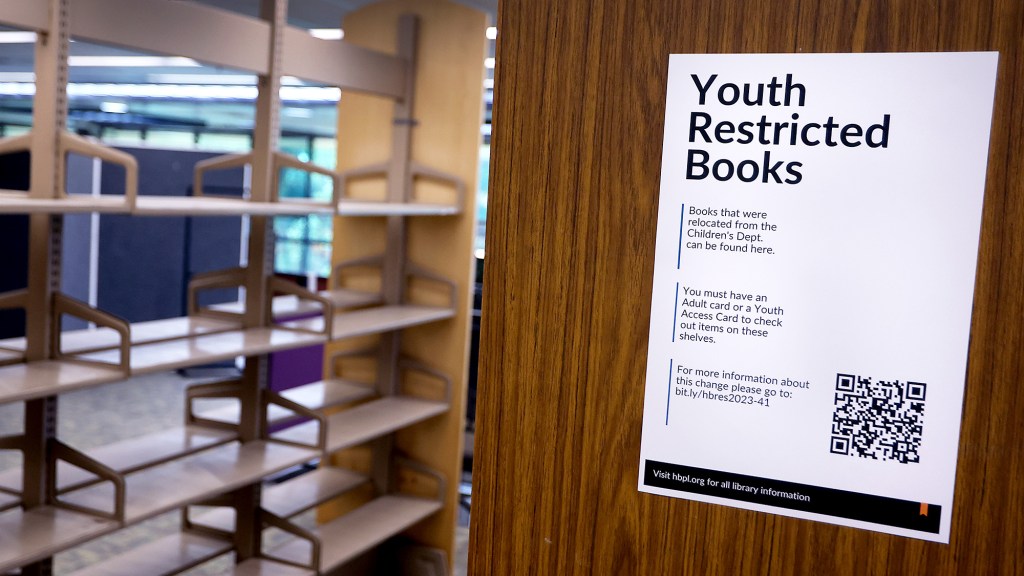ROCKFORD, IL—Nick Sundin used to be neurotic about littering. The 37-year-old pediatrician admits he kept trash bags in his car, and would even pick up and throw away garbage he found on the street. Since boyhood, Sundin said, he was keenly attuned to the environmental degradation littering caused, an attitude triggered by the famous Keep America Beautiful “Crying Indian” public service announcement he saw on television as a young man.

Not anymore.
“These ’eco’ products are amazing—they’ve totally changed my life,” Sundin said. “Now, I just toss my used Seventh Generation–brand paper plates out the car window, knowing they’ll soon be absorbed into the earth.”
The growing “green” trend in product packaging, which emphasizes the use of recycled, biodegradable post-consumer paper-based materials and relies less on petroleum-derived polymers like styrofoam, has unleashed a spontaneous trashing of sidewalks, roadsides, and pristine wilderness by gratified consumers. Though some environmentalists and scientists were caught off guard by the movement, experts say it is here to stay.
“The stigma attached to littering is at long last being put to rest,” industry analyst Tom Schneider said. “As long as manufacturers are packaging their goods in unbleached paper and biodegradable, cornstarch-based plastics, more and more consumers will discard their refuse wherever they please, knowing it will safely decompose within 10 to 20 years. Call it the ’New Compost.’”

The reaction from “neo-litterbugs” like Sundin has been nothing less than ecstatic. Highway littering shot up 6 percent nationwide in the last weeks of 2006, shortly after retail giant Wal-Mart announced its intention to encourage its tens of thousands of suppliers worldwide to reduce packaging materials.
And now that McDonald’s is incorporating post-consumer materials into some of its packaging, Golden Arches–decorated wrappers and cups are becoming common sites in public parks, residential districts, Civil War battlegrounds, peregrine falcon nesting boxes, and coastal tide pools.
Consumers are also growing more packaging-conscious, checking containers and boxes for recycled and post-consumer content to ensure that, once used, they can be properly wasted.
Receiving a decorative metal tin of cheese popcorn on Administrative Professionals Day in April delighted Miramar, FL medical records supervisor Donna Kern. Finding out that the tin contained 80 percent recycled material delighted her even more.
“I never used to know what to do with those tins, so they just created clutter in my home,” Kern said. “But when I saw that this one was made of recycled metal and nontoxic paint, I went and sank it in the Everglades. Now I’m going through my home to see what other environmentally friendly things I can throw away or burn. Caring about nature has never been so fun.”
Eco-littering, however, is just one of the ways the public is embracing the green idea. The growing popularity of flex-fuel cars, which can run on regular gasoline or the ethanol-hydrocarbon compound known as E85, means more people can enjoy old-fashioned Sunday joyrides and short drives to the neighborhood supermarket without fretting about wasting nonrenewable fuel. Compact fluorescent lightbulbs now save the trouble of turning off lights. And cleaner-burning fuels and sustainable energy sources such as wind and solar power are making the longtime dream of running household appliances at all hours a reality.
“Since they began discussing the construction of that offshore wind farm, I don’t worry about leaving my air conditioner and television on for my cats when I go away,” Worcester, MA retiree Herk Ellroy said. “They can get very hot. And lonely.”
The new prevalence of eco-friendly packaging is the culmination of a decades-long struggle between environmentalists and the business community. Still, some activists are dissatisfied with the results. To curb the new littering, the Sierra Club is now suggesting that all consumer packaging be coated with a toxic, nonbiodegradable polymer that would kill wildlife and poison groundwater unless products were disposed of in heavy plastic garbage bags.







